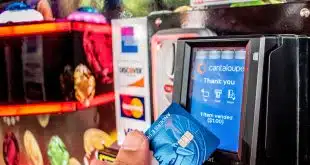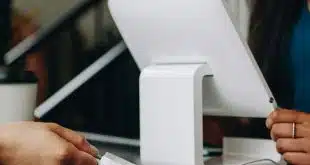While the benefits of electronic transactions for health-care payments—reduced operating costs, efficient processing, enhanced reliability, and strengthened security—are widely acknowledged, the health-care industry has faced many challenges keeping pace with standard electronic-payment adoption rates. And the problem will only get worse unless payment-solution providers expand their offerings to support the evolving needs of the health-care industry.
As the number of high-deductible health-care plans increases, many health-care providers suddenly find themselves working in a predominantly business-to-consumer model. That means they are billing thousands of individual payors rather than a selective group of corporate payors. A recent InstaMed study reveals that approximately 74% of providers saw an increase in patient financial responsibility in 2015. This is driving up the number of check payments providers receive, due in part to entrenched paper-based billing practices.
Today, nearly 90% of providers mail paper statements to their patients, according to a survey conducted by HIMSS Analytics. Paper statements tend to generate a high remittance of check payments. InstaMed reports that 96% of consumers pay a portion of their providers via paper checks. An internal 2016 survey of Noventis partners found that health-care payments represent 10% to 15% of the total paper-check volume, a surprisingly high number considering the numerous types of check payments our partners touch.
The slow nature of check payments delays the availability of funds for providers, increases processing costs, and negatively impacts cash flow and revenue-cycle performance. Seventy percent of providers surveyed by InstaMed reported that it takes on average one month or longer to collect payment from a patient.
As consumers bear a larger burden of medical expenses, providers are finding it more difficult to collect outstanding balances from patients. According to McKinsey & Company, providers expect to collect only 50% to 70% of a patient balance after a visit. Of balances that are fully reconciled, more than half of providers in a HIMSS survey said it takes more than three months for the average patient to pay his or her bill in full.
The lack of payment infrastructure and means to deliver electronic payments and rich remittance data to a widely disparate group of providers is slowing the adoption of electronic transactions in health care.
As health-care consumerization trends continue, most providers are embracing a range of digital payment methods, including credit cards. Despite the fees associated with card payments, health-care organizations prefer the guarantee of fast, electronic payment over maintaining high outstanding patient balances. Leading payment-solution providers are responding to these changing market requirements and positioning themselves to better serve providers with faster forms of electronic payments.
To convert more patient checks and other cumbersome transactions into fast, efficient digital payments, payment providers must support the delivery of electronic payments to health-care providers using the delivery methods that providers desire the most, which may include card, e-check, automated clearing house, interactive voice response, Web, fax, email, or straight-through-processing. Additionally, payment providers must extend their check-conversion services to cover both business and consumers, as well as expand their electronic endpoint networks to include the hundreds of thousands of health-care providers that have already made e-payment acceptance possible.
As these shifts happen, the payment providers that extend their solutions beyond high-dollar business payments to include high-volume consumer electronic payments will deliver the most value to the health-care industry. In turn, health-care providers will reap the benefits of reduced number of days in accounts receivable, a smoother billing process, greater efficiency, and cost savings.
As a prevailing number of payment players dedicate themselves to this effort, the day is quickly approaching when the old saying, “the check is in the mail” can finally be retired.
—Blair Jeffery is the chief operating officer of Noventis Inc., Houston.





